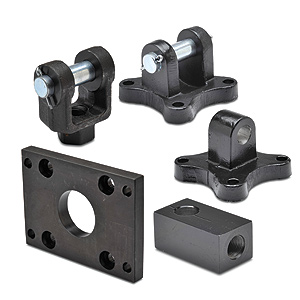This article is designed to give you an overview of NFPA cylinders. In the article, we’ll talk about what the NFPA is, what NFPA cylinders are, what they’re used for, and give a list of some sample specifications and advantages of NFPA cylinders.
A General Overview Of Common Usages of NFPA Cylinders
NFPA cylinders are hydraulic cylinders which are created to NFPA standards. (More on that below.)
They are mostly used in engineering and manufacturing applications. For instance, these cylinders have their uses in manufacturing machinery which needs both movement and support with heavy loads, construction equipment (The big bonus of NFPA cylinders is that they can take a huge amount of force being exerted upon them) and civil engineering.
We’ll talk in a future section about the advantages of NFPA cylinders, but the above gives a general guideline for their use in the general manufacturing sector.
What You Need to Know About The NFPA
The NFPA is an organisation that unites fluid power manufacturers. For the purposes of this article, you need to know that their key job is to help consumers by ensuring that all manufacturers of certain types of cylinders stick to pre-defined measurements. This helps the consumer because it means that, regardless of the original manufacturer, all the replacements you could choose from by all manufacturers will fit to the standardised measurements.
Over three hundred and fifteen companies are currently registered with the National Fluid Power Association, so you’re well covered should you choose to buy from a National Fluid Power Associates member business.
Advantages of NFPA Cylinders
We’ve highlighted above what the cylinders are used for and why NFPA certification is so important. Here are some of the benefits of NFPA cylinders.
They Are Interchangeable
This is a big advantage. In manufacturing, all too often a single company is the basic monopoly holder of specific parts. This drives the prices up. The NFPA means that you can constantly shop around as a consumer, and as a producer you don’t have to deal with customers who have incompatible products.
They Can Handle Heavy Loads and High Force Pressure
If you’re working in manufacturing, civil engineering or construction, then you know that the all-important metric is “can this equipment handle heavy loads?” If it can’t, you are putting your team, and everyone else, in danger when you use it. NFPA regulated cylinders can handle heavy loads, so you’re safe and building effective projects with them.
Some Sample Dimensions for a NFPA Cylinder
Here is a sample set of attributes and features for a cylinder which is designed to meet the NFPA standard specifications.
– Bore sizes from 1-1/2″ through 6″ (though this could be larger for larger series of cylinders.)
– Piston rod diameters from 5/8″ to 1-3/4″ (Again, sizes of up to 2 and a half inches are also common.)
– Nominal pressure rating is 250 psi air
– Standard temperature -10°F to 165° F.
– NPTF ports
– Flexible port and cushion locations.
A Multitude of mounting options.

